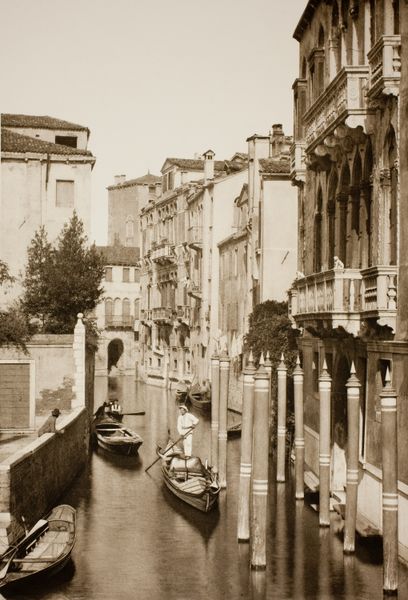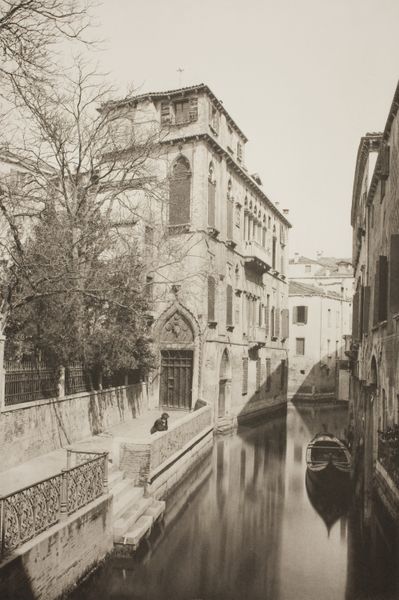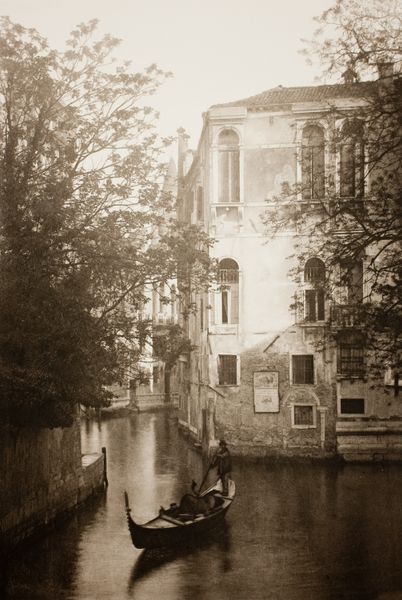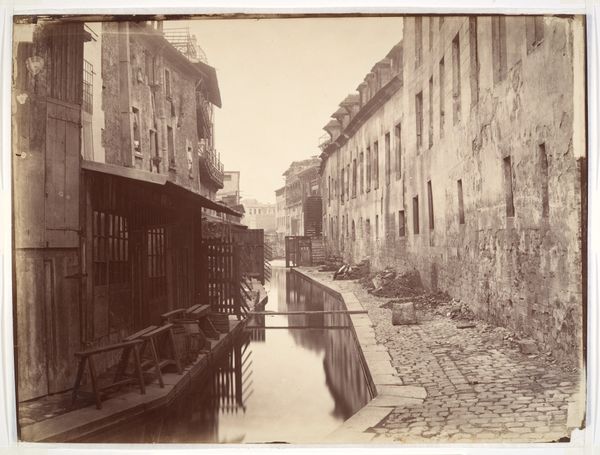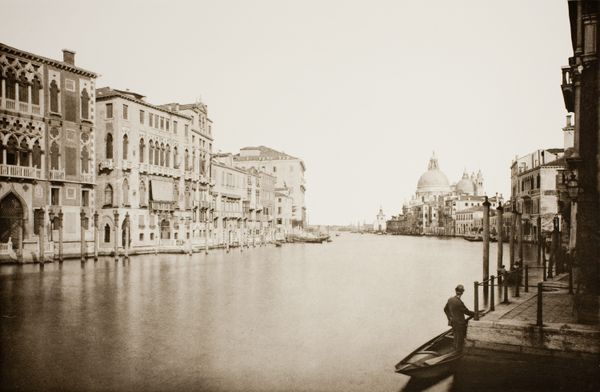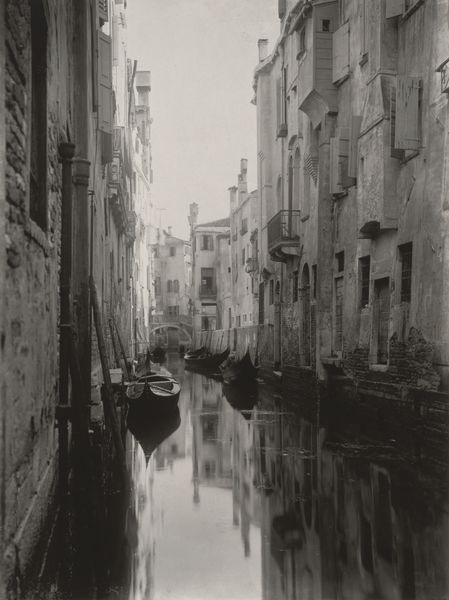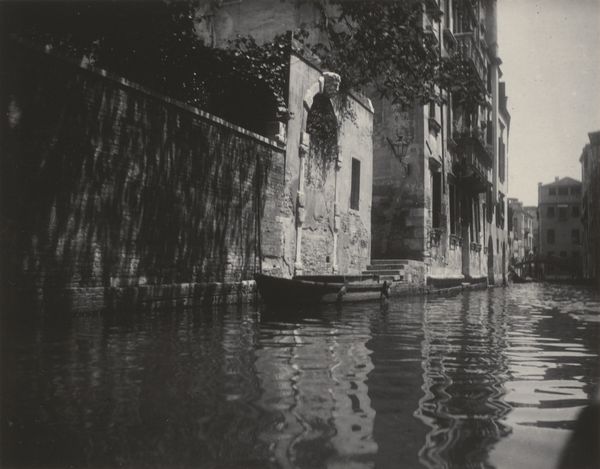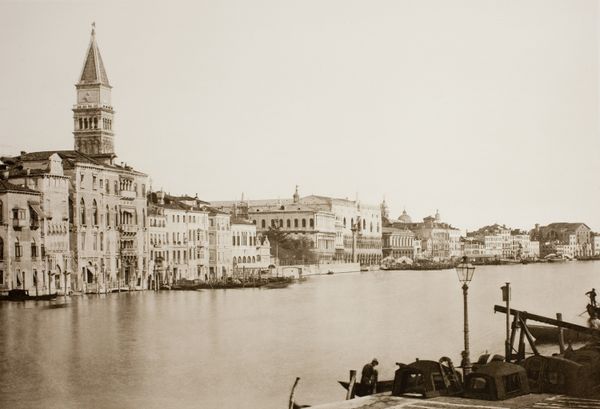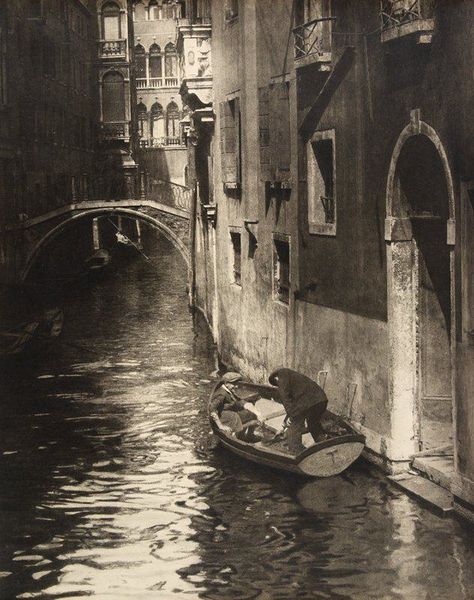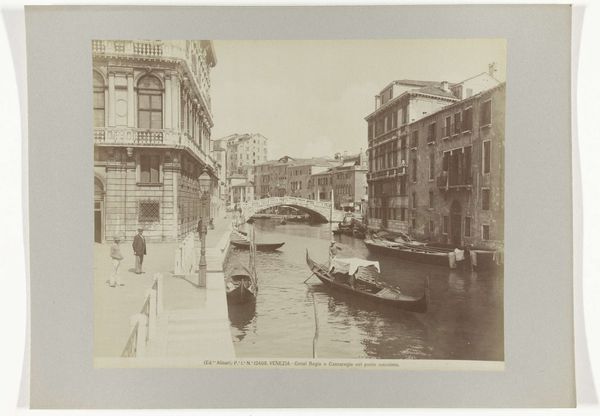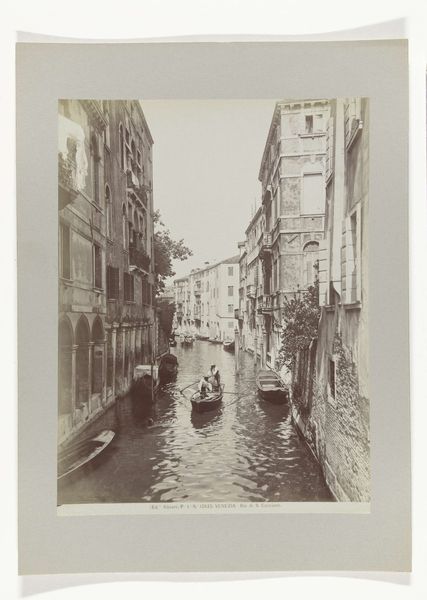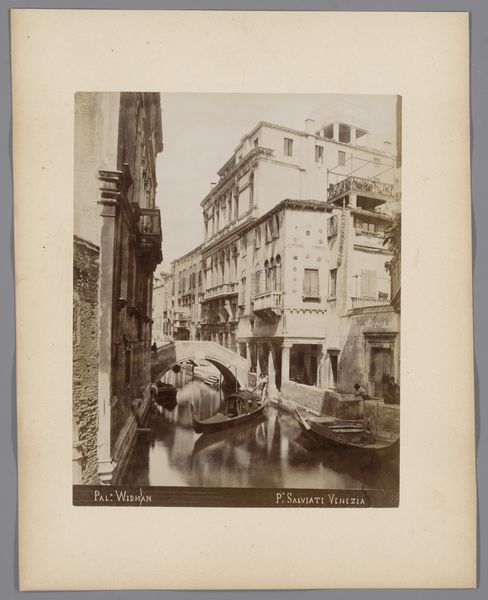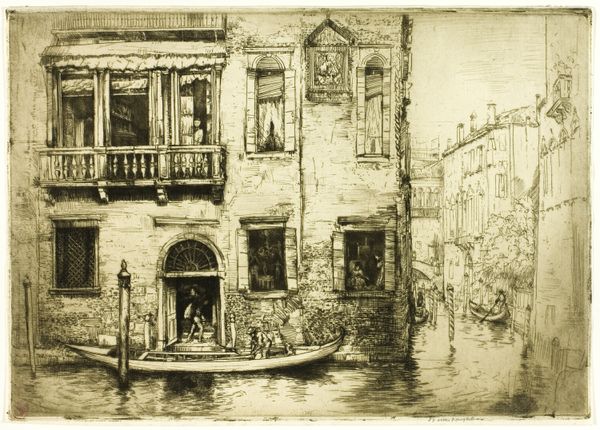
print, etching, photography
#
cityscape photography
# print
#
etching
#
landscape
#
historic architecture
#
street-photography
#
photography
#
landscape photography
#
orientalism
#
cityscape
#
genre-painting
#
realism
Dimensions: 33 × 23 cm (image); 55.1 × 37.1 cm (paper)
Copyright: Public Domain
Editor: We're looking at "Untitled (II 8)," a print – most likely an etching – by Ferdinando Ongania, dating from around 1890. It’s a view of Venice, naturally, and the first thing that strikes me is how… staged it feels, almost theatrical, despite being a photograph. What's your take? Curator: Staged is an interesting word. Remember, photography at this time wasn’t as instantaneous as today. Photographers often emulated painting. Think about the late 19th century: Venice was experiencing a boom in tourism, particularly amongst the European and American elite, fueled by Romantic ideals. This image isn't just showing Venice; it's *selling* an idea of Venice, isn’t it? The 'exotic' and timeless city on the water. Editor: So you are saying the scene may be more crafted than a modern snapshot would be. It feels less like documentary and more like a carefully constructed… advertisement, maybe? For tourism? Curator: Exactly. Notice the gondola prominently placed. It evokes a particular lifestyle, right? How much of this scene do you think is “authentic” versus constructed to appeal to what wealthy tourists wanted to experience or take home as a souvenir? This is a genre scene reflecting the orientalist interpretation of Italy during the nineteenth century, like others found across Northern Africa and the Middle East. Editor: That's fascinating. The orientalist take changes my perspective. I was thinking primarily of aesthetics and photographic technique. How the soft focus makes it seem more romantic, but there is the sharp political reading too, where the image sells a constructed and ultimately artificial experience of Venetian reality. Curator: Indeed. Ongania, whether consciously or not, participates in the construction and dissemination of that imagery. So, perhaps the “stage” you noticed wasn’t accidental. It highlights how intertwined art and commerce, image-making and power, truly are. Editor: I hadn’t thought about it in terms of active participation. Seeing the image in terms of construction is different and important. Thanks for making me think about how socio-politics may have had a play into how Ongania approached this artwork!
Comments
No comments
Be the first to comment and join the conversation on the ultimate creative platform.
